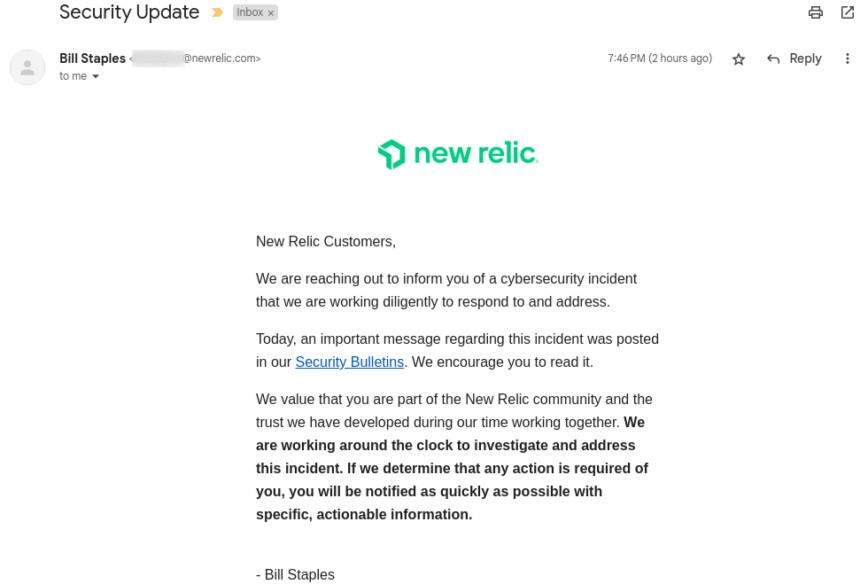Passwordless Authentication Services
The digital landscape of 2024 is rapidly evolving, and with it, the need to reassess traditional cybersecurity practices, particularly the reliance on passwords. Recent studies and developments in the field of cybersecurity strongly advocate for a transition towards a passwordless future. This blog post delves into the reasons why passwords should become a relic (no pun intended) of the past in 2024.
The Perilous State of Password Security
A comprehensive study conducted by Georgia Tech reveals a startling picture of the current state of password security. This study, involving an assessment of 20,000 websites, found that: A staggering 75% of websites fail to require the recommended eight-character minimum for passwords, more than half of the sites accepted passwords with six characters or less and only 12% enforced a password block list, leaving the majority vulnerable to common password attacks.
The Problems with Passwords
In short, passwords present three main problems:
- Reusability: Despite best practices, password reuse is rampant. A Bitwarden survey found that 84% of respondents reuse passwords across multiple sites.
- Phishability: Passwords are susceptible to phishing attacks, with a 41% surge in such attacks in the first half of 2023.
- Cost: Beyond security risks, password management is costly for organizations, with expenses averaging around $480 per employee annually.
These findings underline the inherent weaknesses in password-based security systems, exposing millions of users to potential cyber threats.
The Shift to Passwordless Authentication

The movement towards a passwordless future is gaining significant traction. Okta, a leader in identity and access management, has already achieved a 98% passwordless status in its workforce. Forbes predicts that by the end of 2023, 80% of Fortune 500 companies will have formalized and budgeted passwordless authentication projects. This shift is driven by two main factors:
- User Experience: Passwordless systems offer a more streamlined and efficient user experience, freeing individuals from the burden of remembering multiple passwords.
- Security Posture: Eliminating passwords as an attack vector significantly enhances overall security.
Passwordless Authentication Services
As the digital landscape moves towards a passwordless future, several services have emerged as leaders in this domain. Here are ten (10) notable passwordless authentication services:
- Microsoft Authenticator: This service enables passwordless sign-in through a mobile app, using advanced biometrics and security keys for secure authentication.
- Duo Security (by Cisco): Known for its versatility, Duo Security offers various authentication methods, including push notifications and Universal 2nd Factor (U2F), ensuring secure and passwordless access.
- Yubico YubiKey: This hardware security key supports a range of authentication protocols, offering robust, passwordless, and phishing-resistant access.
- Okta FastPass: A comprehensive solution, Okta FastPass allows passwordless authentication across different devices and platforms, utilizing biometrics and context-driven factors for secure access.
- RSA SecurID Access: This service provides a variety of passwordless authentication options. Its methods include biometrics and mobile push notifications, balancing enhanced security with user convenience.
- Auth0: Auth0 is a widely used identity and access management platform that offers robust passwordless authentication options.
- Ping Identity: Ping Identity offers passwordless authentication solutions that leverage factors like biometrics, mobile push notifications, and hardware tokens.
- LastPass: LastPass provides passwordless authentication options, including biometric authentication and single sign-on (SSO) capabilities.
- OneLogin: OneLogin offers passwordless authentication with support for various factors such as biometrics, mobile authentication, and smart cards.
- DASH-Passwordless: a cutting-edge authentication solution designed to offer secure and password-free access, leveraging advanced methods like biometrics and mobile device verification.
It’s also useful to recognize FIDO2. While not a specific service, FIDO2 is an open standard for passwordless authentication supported by various platforms and providers. It enables passwordless authentication using devices like security keys, biometrics, and smartphones.
These services (suggestions welcomed) represent the forefront of passwordless authentication technology, each offering unique features to meet the evolving needs of digital security.
Biometric and Behavioral Authentication
Biometric Authentication: This method utilizes unique physical characteristics of an individual for identification and access control. Common forms include fingerprint and facial recognition, which are now standard features in many smartphones and laptops. Biometrics offers a higher level of security compared to traditional passwords, as these characteristics are extremely difficult to replicate or steal.
Behavioral Biometrics: This is a cutting-edge development in the realm of authentication. Behavioral biometrics analyzes patterns in human activities, such as the way a person types, the speed of their typing, their mouse movements, and even their gait while walking. Unlike physical biometrics, which require a one-time enrollment and validation, behavioral biometrics continuously monitor and authenticate a user based on their behavior. This method is highly effective in detecting imposters, since it’s challenging to mimic someone else’s behavior accurately over time.
Advantages of These Methods: Both biometric and behavioral authentication offer enhanced security by leveraging unique individual characteristics that are difficult to duplicate. They also provide a more user-friendly experience, as they often eliminate the need to remember complex passwords. Furthermore, these methods can adapt to changes in the user’s behavior or physical attributes over time, making them more flexible and robust against various types of cyber threats.
Multi-Factor Authentication (MFA)
MFA enhances security, but is not without its limitations. For example, SMS-based MFA, while more secure than password-only authentication, is not entirely phishing-resistant. There’s a growing emphasis on implementing phishing-resistant factors, such as biometric checks, in MFA systems.
Enhancing MFA with Phishing-Resistant Factors: To counteract these vulnerabilities, there’s a shift towards incorporating phishing-resistant factors into MFA. This includes using biometric verification (like fingerprint or facial recognition) and hardware security keys. These methods are more secure because they rely on physical characteristics or devices that are harder to replicate or steal.
Adaptive MFA: Another advancement is adaptive MFA, which adjusts the authentication method based on the perceived risk of the access request. For example, it might require additional factors for login attempts from unfamiliar locations or devices, thereby balancing security with user convenience.
Passwordless Authentication – The Way Forward!
The notion of a passwordless future is not a recent one; it has been a long time coming. As far back as 2004, Bill Gates anticipated the eventual decline of traditional passwords. Recognizing the inherent vulnerabilities in password-based security, he envisioned a future where more robust and secure authentication methods would replace them.
Fast-forward almost two decades, and we find ourselves standing at the cusp of this transformative change. Tech giants such as Google, Apple, and Microsoft have spearheaded the movement towards a passwordless era. They’ve harnessed cutting-edge technologies like passkeys to make this vision a reality. Passkeys represent a revolutionary approach to authentication, relying on cryptographic keys stored on devices rather than memorized passwords. This innovative method enhances security and eliminates the risks associated with password theft and phishing attacks.
In addition to technological advancements, legislative measures are driving this shift forward. The European Union’s eIDAS2 legislation is a pivotal step in standardizing digital identity across its member states. It mandates the creation of digital wallets for citizens, which can be used as official identity verification across various platforms, thereby reducing the reliance on passwords. Similarly, proposed legislation in the UK seeks to fortify digital identities, laying the groundwork for robust and trustworthy methods of identity verification.
I received this mysterious email from New Relic tonight – Security Bulletin NR23-01:
(anyone with any details on what’s this all about??)
